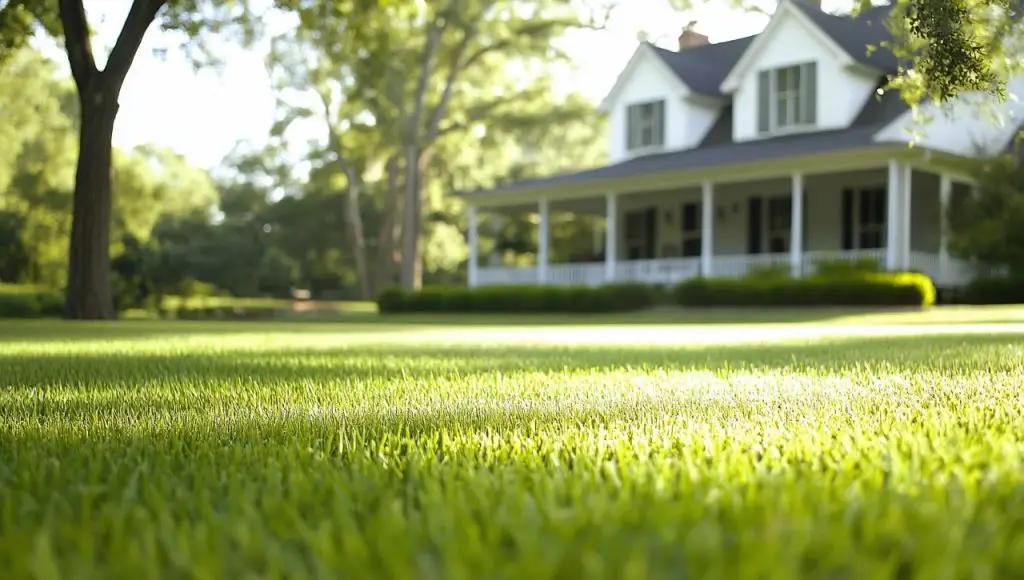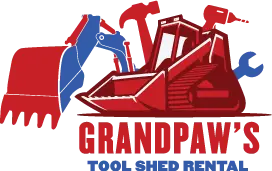Maintaining Your North Central Texas Lawn
August - October
As the scorching North Central Texas summer transitions into the milder fall, your lawn’s needs shift. Here’s some tips on how to keep your grass healthy and vibrant from August through October from Grandpaw’s Tool Shed in Eastland, Texas. Should you need any lawn care equipment rentals, please reach out to us!

August: Holding Strong in the Heat
August is often the hottest and driest month in North Central Texas, demanding continued vigilance.
Mowing: Continue your regular weekly mowing schedule. For Bermudagrass, maintain a height of 1-2 inches. Remember the “one-third rule” – never remove more than one-third of the blade at a time to prevent scalping and stress on the grass.
Watering: This is crucial. Bermudagrass needs approximately 1 inch of water per week, whether from rainfall or irrigation. Focus on deep and infrequent watering to encourage deep root growth, making your lawn more resilient to drought. Water early in the morning (before 10 AM) to minimize evaporation and reduce the risk of fungal diseases that thrive in prolonged moisture.
Weed Control: Continue to scout for and address summer weeds. Post-emergent herbicides are most effective when weeds are small. However, be mindful of high temperatures when applying herbicides, as some products can cause turf damage in extreme heat. Always read product labels carefully.
Brush Cutters: If you have areas that become overgrown quickly during the summer, like fence lines, ditches, or around utility boxes, the brush cutter will remain a valuable tool. Keep these areas trimmed to prevent weeds from going to seed and spreading to your main lawn. Always wear appropriate safety gear (long pants, safety glasses, ear protection, gloves, sturdy boots) when operating a brush cutter.
September: The Transition to Fall
As temperatures begin to moderate, your lawn will start preparing for dormancy.
Mowing: You can gradually start to raise your mowing height by about half an inch. This encourages the grass to develop a deeper root system, which helps it store energy for the winter.
Fertilization: If you didn’t conduct a soil test, a general guideline for Bermudagrass is to apply your last nitrogen fertilizer application of the season by mid-September. This “winterizer” application (often higher in potassium) helps the grass develop strong roots and increases its cold hardiness. Aim for 0.5 to 1 pound of nitrogen per 1,000 square feet.
Weed Control: Fall is an excellent time to apply pre-emergent herbicides for winter annual weeds like poa annua (annual bluegrass) and henbit. Apply when evening temperatures consistently drop below 70°F for several days. This prevents these weeds from germinating over the cooler months.
Lawn Rollers: If you notice minor surface irregularities from summer activity, you could consider a light roll, but it’s generally best to save more significant rolling for early spring when the soil is more malleable. Overly compacting clay soil in the fall can hinder root growth.
Aeration: If you didn’t aerate in the spring, early fall (late September) can still be a good time to do so for Bermudagrass. Aeration helps alleviate soil compaction, improves water and nutrient penetration, and promotes healthier root growth before the grass goes dormant.
October: Preparing for Winter Dormancy
Your warm-season grass will be slowing down significantly, preparing for its winter rest.
Mowing: Continue to mow as needed, likely less frequently now. You can maintain the slightly higher mowing height established in September.
Leaf Vacuums: As deciduous trees in the area begin to drop their leaves in earnest, a leaf vacuum becomes an indispensable tool. Promptly remove fallen leaves from your lawn. Leaving a thick layer of leaves can smother the grass, block sunlight, and create an environment for fungal diseases and pests. Many leaf vacuums also shred the leaves, creating excellent mulch for garden beds or compost piles. This shredded material also helps prevent thatch buildup in your lawn.
Rear-Tine Tillers: While not a regular lawn maintenance tool, if you’re planning any new landscaping projects for the spring, like creating new garden beds or expanding existing ones, October is a good time to prepare the soil. A rear-tine tiller can efficiently break up compacted soil and incorporate amendments like compost or organic matter. This allows the amendments to begin integrating with your soil over the winter, improving its structure for spring planting. Remember to clear the area of debris before tilling and ensure the soil is damp, not wet, to avoid creating clods.
By following these lawn and garden care tips for August through October this year, you’ll ensure your North Central Texas lawn remains as healthy and resilient as possible, ready to emerge vibrant and green again next spring.
FAQ
How do I take care of Bermudagrass in North Central Texas during the late summer heat?
When should I apply my last fertilizer treatment in Eastland, Texas?
What lawn care equipment helps manage overgrown areas around my property?
Is fall a good time to aerate my Bermudagrass lawn in North Central Texas?
Why is it important to remove fallen leaves from my lawn in the fall?

Grandpaw’s Tool Shed: Your Local Advantage for Equipment Rentals Near Fort Worth (and Beyond!)
Located conveniently in Eastland, we’re proud to serve the North Central Texas region east of Fort Worth. Choosing Grandpaw’s Tool Shed for your equipment rentals means you get a trusted partner. Contact us today to discuss your lawn and garden equipment rental needs and let us help you keep that lawn looking nice and healthy!
Contact us today or browse our online inventory to find the perfect rental and reserve your equipment online today!

